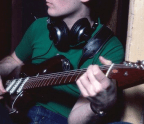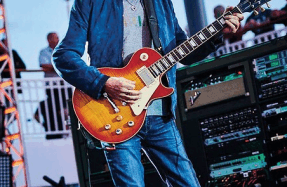NO WAY TO SLOW DOWN

“IT WAS A VERY DIFFICULT ALBUM TO MAKE. THERE WERE A LOT OF PROBLEMS”
IN THE ANNALS of progressive rock, Jethro Tull’s Aqualung stands apart from much of the meandering music that populates the genre. The album came out 50 years ago, in 1971, a year that also heralded the arrival of other prog-rock classics, such as Yes’s Fragile, Genesis’s Nursery Cryme and Emerson, Lake and Palmer’s Tarkus. And yet, Aqualung has always been an album that any rock-and-roll fan could love. That undoubtedly comes down to Jethro Tull’s singular musical style. While bands like Yes and Genesis were making music that was both classically inspired and often redolent of English pastoral sounds, what separates Tull from so many of their prog contemporaries is that they never forgot they were playing rock music — albeit rock music imbued with the group’s blues, jazz and folk roots.

A rich and varied collection of songs, Aqualung has often been described as a concept album, a claim that singer and primary songwriter Ian Anderson refutes. However you choose to view it, Aqualung rewards repeated visits, the layers of flute, keyboards and — especially — guitars revealing more with each listen. Tull’s previous albums had featured acoustic guitar but never to the extent that they are present on Aqualung, where folkflavored acoustic musings like “Wond’ring Aloud” and “Mother Goose” contrast with heavier classics like “Locomotive Breath,” “Cross-Eyed Mary” and “Aqualung.” The combination of Anderson’s acoustic guitar and guitarist Martin Barre’s hard-hitting electric riffery coalesced into the perfect distillation of what would become the staple ingredients of the prog genre.

Prog, of course, is short for progressive, and that description is particularly apt where Aqualung is concerned. As Barre explains to Guitar Player, “This record came at a time when we’d turned the corner on the naïveté of learning to become musicians, and more was then expected of us. We needed to progress.”
Having launched in 1967 as a blues group, and — but the disparate genres in their music hadn’t quite coalesced into a singular musical vision.
You’re reading a preview, subscribe to read more.
Start your free 30 days





